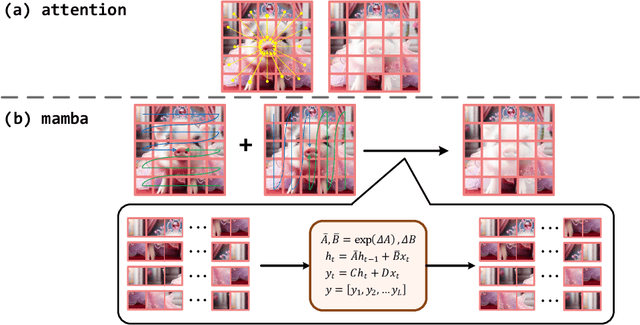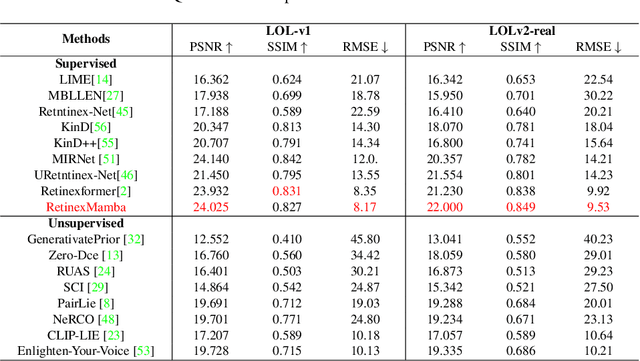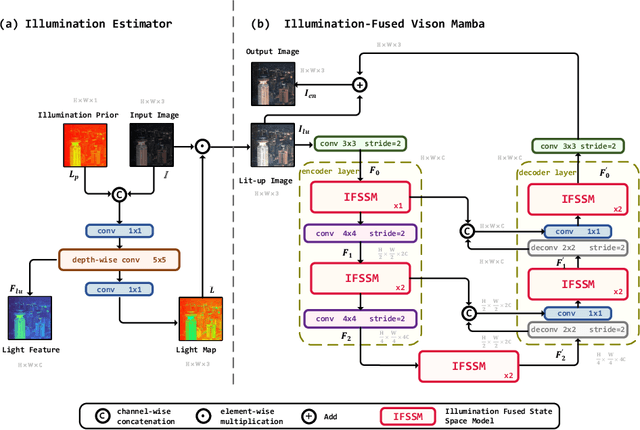Qiyuan He
REAR: Rethinking Visual Autoregressive Models via Generator-Tokenizer Consistency Regularization
Oct 06, 2025Abstract:Visual autoregressive (AR) generation offers a promising path toward unifying vision and language models, yet its performance remains suboptimal against diffusion models. Prior work often attributes this gap to tokenizer limitations and rasterization ordering. In this work, we identify a core bottleneck from the perspective of generator-tokenizer inconsistency, i.e., the AR-generated tokens may not be well-decoded by the tokenizer. To address this, we propose reAR, a simple training strategy introducing a token-wise regularization objective: when predicting the next token, the causal transformer is also trained to recover the visual embedding of the current token and predict the embedding of the target token under a noisy context. It requires no changes to the tokenizer, generation order, inference pipeline, or external models. Despite its simplicity, reAR substantially improves performance. On ImageNet, it reduces gFID from 3.02 to 1.86 and improves IS to 316.9 using a standard rasterization-based tokenizer. When applied to advanced tokenizers, it achieves a gFID of 1.42 with only 177M parameters, matching the performance with larger state-of-the-art diffusion models (675M).
Conceptrol: Concept Control of Zero-shot Personalized Image Generation
Mar 09, 2025Abstract:Personalized image generation with text-to-image diffusion models generates unseen images based on reference image content. Zero-shot adapter methods such as IP-Adapter and OminiControl are especially interesting because they do not require test-time fine-tuning. However, they struggle to balance preserving personalized content and adherence to the text prompt. We identify a critical design flaw resulting in this performance gap: current adapters inadequately integrate personalization images with the textual descriptions. The generated images, therefore, replicate the personalized content rather than adhere to the text prompt instructions. Yet the base text-to-image has strong conceptual understanding capabilities that can be leveraged. We propose Conceptrol, a simple yet effective framework that enhances zero-shot adapters without adding computational overhead. Conceptrol constrains the attention of visual specification with a textual concept mask that improves subject-driven generation capabilities. It achieves as much as 89% improvement on personalization benchmarks over the vanilla IP-Adapter and can even outperform fine-tuning approaches such as Dreambooth LoRA. The source code is available at https://github.com/QY-H00/Conceptrol.
Large Language Model-Enhanced Symbolic Reasoning for Knowledge Base Completion
Jan 02, 2025



Abstract:Integrating large language models (LLMs) with rule-based reasoning offers a powerful solution for improving the flexibility and reliability of Knowledge Base Completion (KBC). Traditional rule-based KBC methods offer verifiable reasoning yet lack flexibility, while LLMs provide strong semantic understanding yet suffer from hallucinations. With the aim of combining LLMs' understanding capability with the logical and rigor of rule-based approaches, we propose a novel framework consisting of a Subgraph Extractor, an LLM Proposer, and a Rule Reasoner. The Subgraph Extractor first samples subgraphs from the KB. Then, the LLM uses these subgraphs to propose diverse and meaningful rules that are helpful for inferring missing facts. To effectively avoid hallucination in LLMs' generations, these proposed rules are further refined by a Rule Reasoner to pinpoint the most significant rules in the KB for Knowledge Base Completion. Our approach offers several key benefits: the utilization of LLMs to enhance the richness and diversity of the proposed rules and the integration with rule-based reasoning to improve reliability. Our method also demonstrates strong performance across diverse KB datasets, highlighting the robustness and generalizability of the proposed framework.
Retinexmamba: Retinex-based Mamba for Low-light Image Enhancement
May 06, 2024



Abstract:In the field of low-light image enhancement, both traditional Retinex methods and advanced deep learning techniques such as Retinexformer have shown distinct advantages and limitations. Traditional Retinex methods, designed to mimic the human eye's perception of brightness and color, decompose images into illumination and reflection components but struggle with noise management and detail preservation under low light conditions. Retinexformer enhances illumination estimation through traditional self-attention mechanisms, but faces challenges with insufficient interpretability and suboptimal enhancement effects. To overcome these limitations, this paper introduces the RetinexMamba architecture. RetinexMamba not only captures the physical intuitiveness of traditional Retinex methods but also integrates the deep learning framework of Retinexformer, leveraging the computational efficiency of State Space Models (SSMs) to enhance processing speed. This architecture features innovative illumination estimators and damage restorer mechanisms that maintain image quality during enhancement. Moreover, RetinexMamba replaces the IG-MSA (Illumination-Guided Multi-Head Attention) in Retinexformer with a Fused-Attention mechanism, improving the model's interpretability. Experimental evaluations on the LOL dataset show that RetinexMamba outperforms existing deep learning approaches based on Retinex theory in both quantitative and qualitative metrics, confirming its effectiveness and superiority in enhancing low-light images.
AID: Attention Interpolation of Text-to-Image Diffusion
Mar 26, 2024Abstract:Conditional diffusion models can create unseen images in various settings, aiding image interpolation. Interpolation in latent spaces is well-studied, but interpolation with specific conditions like text or poses is less understood. Simple approaches, such as linear interpolation in the space of conditions, often result in images that lack consistency, smoothness, and fidelity. To that end, we introduce a novel training-free technique named Attention Interpolation via Diffusion (AID). Our key contributions include 1) proposing an inner/outer interpolated attention layer; 2) fusing the interpolated attention with self-attention to boost fidelity; and 3) applying beta distribution to selection to increase smoothness. We also present a variant, Prompt-guided Attention Interpolation via Diffusion (PAID), that considers interpolation as a condition-dependent generative process. This method enables the creation of new images with greater consistency, smoothness, and efficiency, and offers control over the exact path of interpolation. Our approach demonstrates effectiveness for conceptual and spatial interpolation. Code and demo are available at https://github.com/QY-H00/attention-interpolation-diffusion.
Can Language Models Act as Knowledge Bases at Scale?
Feb 22, 2024



Abstract:Large language models (LLMs) have demonstrated remarkable proficiency in understanding and generating responses to complex queries through large-scale pre-training. However, the efficacy of these models in memorizing and reasoning among large-scale structured knowledge, especially world knowledge that explicitly covers abundant factual information remains questionable. Addressing this gap, our research investigates whether LLMs can effectively store, recall, and reason with knowledge on a large scale comparable to latest knowledge bases (KBs) such as Wikidata. Specifically, we focus on three crucial aspects to study the viability: (1) the efficiency of LLMs with different sizes in memorizing the exact knowledge in the large-scale KB; (2) the flexibility of recalling the memorized knowledge in response to natural language queries; (3) the capability to infer new knowledge through reasoning. Our findings indicate that while LLMs hold promise as large-scale KBs capable of retrieving and responding with flexibility, enhancements in their reasoning capabilities are necessary to fully realize their potential.
 Add to Chrome
Add to Chrome Add to Firefox
Add to Firefox Add to Edge
Add to Edge